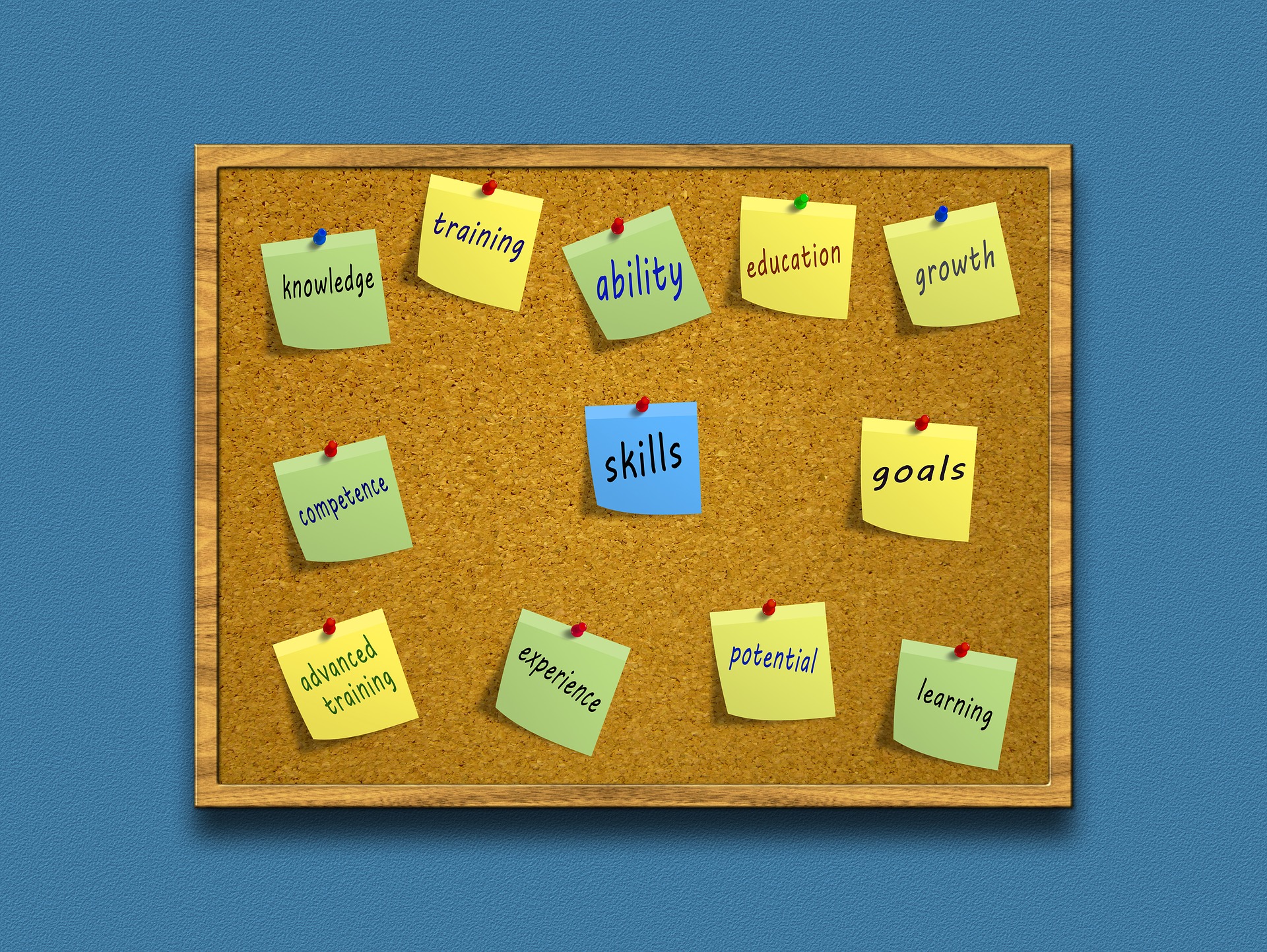Have you ever wondered what is the path to better career opportunities? Your employees certainly have. A LinkedIn study suggests that more than 94% of the employees would stay at an organization for a long time if the latter invested in their career growth, viz a viz an employee development plan, or something similar.
Most of the organizations often stagger at this step because the employees are so burdened with tasks that learning seems like an addition to their worklist rather than the means to reduce it. Nevertheless, it is imperative to improve employee retention and employee engagement, and the overall work environment.
The question then arises, how do HRs implement something so nebulous?
The answer is an Employee Development Plan. Whether it’s an at-will employee or a contractual one, they all benefit from an a staff development plan. A plan that hones their overall skills and energizes their career trajectory is a great way to improve attrition.
In this blog, we will take you through everything an employee development plan entails. This can range from employee development examples to a straightforward employee development plan template. We’ll also explain how a staff development plan can benefit both the employees and the organization in the long run.
What is an Employee Development Plan?
An employee development plan has two-fold importance in an organization and an employee’s individual professional growth:
- It contributes towards the development of employee’s current professional skills
- It provides them with the relevant tools that will help increase their efficiency
The important thing to note is that an employee development plan differs from organization to organization, depending upon various factors such as the nature of the industry, the size of the organization, the number of employees, the employer-employee relationship, and more. Thus, while the core template of these plans remains the same, the scale and implementation differ.
However, there are three crucial points to remember while crafting an employee development plan.
- It is a type of performance development plan. Thus, having clear and defined goals is a must
- The rewards should be crystal clear. When productivity increases, so should the compensation; preferably proportionately
- The onus of successfully pulling off an employee development plan lies on the organization. Thus, it is the organization that has to provide all the requisite tools and equipment to the employee and ensure that it hones their skills and improves their productivity
A successful employee development plan should significantly contribute to employee productivity to achieve organizational goals and their personal growth plans. Employee development plans should ‘develop’ individual employees to contribute towards the organization’s overall development that is in sync with its goals and vision.
What is the Need for an Employee Development Plan?
An efficient employee development plan is the need of the hour because it comes with a plethora of professional benefits that contribute towards organizational goals, mission, and vision, as a whole. Further, by contributing towards each employee’s professional growth, it cements the employer-employee relationship as well. Here’s a look at some of the benefits.
- An efficient employee development plan serves as a catalyst in retaining the organization’s best talent
- It contributes towards employee productivity which helps significantly in improving the organization’s reputation
- Employees skills are honed to the max, thereby making them efficient and their strategies effective. Happy and productive employees further create a happy work environment and robust teams
- Employees feel appreciated and valued, with good compensatory policies in place
A good employee development plan takes off the organizational interest from the present and helps it plan for its future - It increases the overall profitability and efficiency of the organization, thus also contributing towards its reputation in the market, both as an employer and as a perfect player in its respective industry
- It’s important to remember these benefits while you create an employee development plan with the help of the key management.
How to Create an Employee Development Plan?

Once you have established the importance of an employee development plan, it is essential to create a comprehensive one. This needs to be done in four broad stages and further detailed ones:
- Plan
- Structure
- Implement
- Monitor
These are further detailed here.
#1: Set Goals
Remember that the main job is to set professional goals. Do not coerce your employees to create and implement a personal development plan that may feel like an additional chore. An employee development plan is the responsibility of an organization, from initiation to implementation. It is integral to set clear and concise goals that are attainable, and most importantly, employee-driven. Refrain from establishing complicated and ambiguous expectations. They will not only defeat the purpose of the development plan but also derail the entire plan.
#2: Prepare the Employees
Preparing the employees is a simultaneous step that many ignore. That is not the right approach. The employee development plan, in the end, is for the employee. And thus, HRs must communicate it so that employees are not be intimidated by the plan.
HRs should convince the employees that it is an exciting engagement activity that will enhance their skills, whether or not they are a part of the organization in the future. Prepare them in a way that they know that the development plan is only for their benefit.
#3: Know the Knowledge Gaps
Assess the strengths and weakness of every employee and respective teams via a SWOT (Strength, Weaknesses, Opportunities, Threats) Analysis, or a better tool, if available. An effective employee development plan is to hone the strengths and reduce employees’ weaknesses while training them to eliminate or minimize professional threats and recognize the opportunities. Analyzing employees will help you gauge the knowledge gaps that need to be addressed and craft the employee development plan accordingly.
#4: Provide Training and Tools
Providing the right tools is extremely important. The organization cannot just craft a policy and expect it to start working magically. It also needs to provide employees with the relevant tools and training to actively participate in the development plan. Often, employees who sync well with professional development plans also add their personal growth plan to the mix. An effective application of both gives birth to future leaders who have a dynamic way of thinking.
#5: Review, Monitor and Adjust
No plan is without its fallacies. This means that whether this your first edition of an employee development plan or a subsequent one, there is no guarantee it will work. But, if you are willing to monitor and improve the plan continuously, there are chances that it will work well and be brilliant. Also, continuous monitoring and review help in determining how it is affecting employee productivity. The costs and revenue have to be weighed against each other and various other factors to conclude whether or not the plan has been effective. If yes, it needs to be cemented and evolved with time. If not, it needs to be corrected and adjusted accordingly. Remember, the onus of an employee development plan’s success is upon the organization and not the employee.
A good employee development plan should have a 360-degree approach that encompasses all the adversities to convert them into a positive experience for employees as individuals and the organization. For that to happen, it needs to be structured, implemented, and monitored well.
Personal Growth Plan vs Employee Development Plan: In Sync or Out of It?
Personal development goals and professional goals are connected. For instance, setting a sleep goal may look like personal achievement, but the boost it provides to overall health serves as a positive push for professional life. After all, a fresh mind creates better plans and active executions.
Similarly, while personal development goals do not directly impact professional life, they do affect it. A nexus of personal growth plans and employee development plan is crucial for the employee’s overall development. The employees need to be made aware of the fact, which can be done effectively at the second stage of implementing the employee development plan. While preparing the employees, efficient communication should be made on personal growth plans as well. This would ensure that the employee development plan’s effectiveness increases manifold.
For instance, if an employee wishes to get a promotion, their personal growth plan is perfectly in sync with his professional one. Thus, when the plan gets implemented, they will benefit more from it in combination with their plan.
Employee development plan template and examples

The employee development plan template is relatively simple to create. Once you know the basics and goals you wish to achieve via a plan, it’s just a matter of creating a formative structure of your thoughts and putting the plan into action.
Here is a template that can get you started.
Employee details:
Name
Employee ID
Job title
Department
Immediate supervisor
Plan details:
PART 1 – GOAL IDENTIFICATION
Start date of the employee development plan
Tasks 6-16 for the employee’s manager:
Employee’s career ambitions
Top 3 long-term professional goals
Top 3 short-term professional goals
How to achieve the goals?
(Set a few activities to each goal and add a deadline)
Long-term goal 1
Activity 1
Deadline
Activity 2
Deadline
Activity 3
Deadline
Short-term goal 1
Activity 1
Deadline
Activity 2
Deadline
Activity 3
Deadline
The goals versus activity section can be replicated to include multiple goals.
PART 2 – CURRENT TASKS
Know positive tasks in the current capacity
(Manager to review the current tasks that are contributing towards long-term goals)
Current task 1
Connection to long-term goals
Current task 2
Connection to long-term goals
Current task 3
Connection to long-term goals
How to elevate these tasks?
Know positive tasks in the current capacity
(Manager to review the current tasks that are contributing negatively towards long-term goals)
Current task 1
How is it negating long-term goals?
Current task 2
How is it negating long-term goals?
Current task 3
How is it negating long-term goals?
How to negate these tasks?
PART 3 – SKILL MANAGEMENT
Identify the additional skills that the employee may want to acquire, which may help them in the current job as well as in a prospective one
List what all needs to be done for the employees to acquire the requisite knowledge, skills, and experience.
Skill 1: Write the skill that needs to be acquired
Action 1: Write the actions to take for acquiring the skills
Replicate to include additional skills and actions.
PART 4 – MONITOR
Create a list of checkpoints to constantly monitor and course align the development plan
Date: To keep track of iterations and the changes made
Do You Need an Employee Development Plan?
The answer is, yes, you do. Employees form the core of any business or organization. A monotonous and non-interactive way of working brings down their interest and productivity. It also elevates their attrition level, which is not good for the organization. An employee development program is an investment in their skills. It ensures that they will be loyal to the organization and be real assets when the time comes.
Does your organization have an employee development plan in place? Do tag us and let us know at @HarmonizeHQ.



